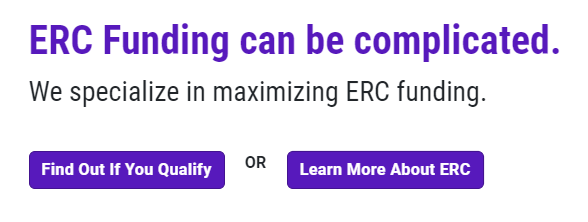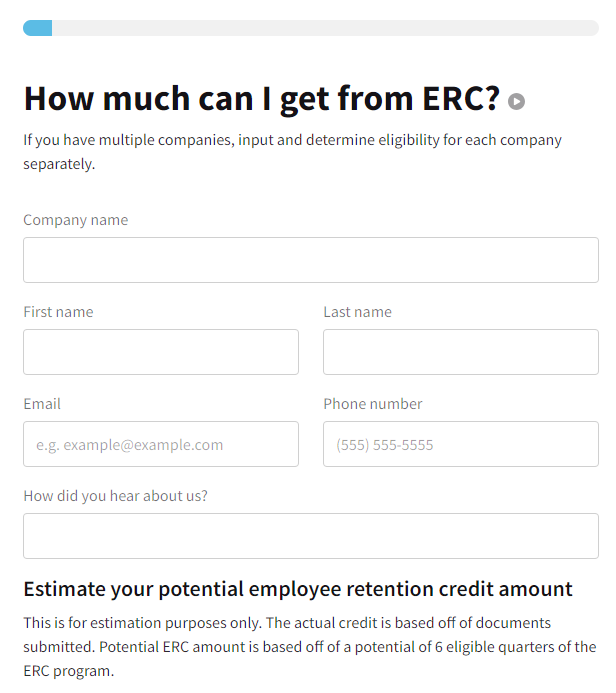You’re puzzled by the IRS’s recent halt on new Employee Retention Credit claims. You’re wondering, ‘What does this mean for my business?’
Let’s unravel this complexity together. We’ll delve into why the IRS has paused processing these claims and how this impacts your business.
We’ll also explore steps to protect your business from potential scams.
Ready to clear up the confusion? Let’s dive in.
IRS halts ERC claims processing
You’ve probably heard about the IRS putting a stop to processing Employee Retention Credit (ERC) claims. This unexpected halt, due to concerns over fraudulent activities, means they won’t be accepting new claims for the time being.
Now, let’s delve into what this could mean for you and your business.
Why this is Actually a Good Thing
It’s mainly due to the increased protection it offers against potential scams. You see, the IRS noticed a surge in questionable claims, raising red flags of possible fraudulent activities. By putting the ERC processing on hold, the IRS has essentially created a safeguard that shields your small business from these potential scams.
This pause allows the IRS to conduct a more in-depth review of the existing claims. Sure, this might extend processing times, but wouldn’t you prefer a thorough compliance review that ensures only legitimate claims get the green light? This way, the IRS can prevent fraud and save honest businesses like yours from taking on any financial burden due to inaccurate claims.
There’s been a rise in aggressive marketing by entities more interested in exploiting businesses for hefty fees than actually assisting them. The halt sends a clear message to these unscrupulous promoters, potentially curbing their predatory activities.
The break in processing also grants the IRS the chance to beef up the system’s safeguards against future abuse. Plus, it helps maintain the integrity and efficiency of the broader tax system, as emphasized by IRS Commissioner Danny Werfel.
Lastly, this halt lets the IRS focus on educating businesses about the intricacies of the ERC rules. By encouraging you to consult with trusted tax professionals and releasing a new Q&A guide, they equip you with the knowledge to navigate the claim process accurately. So, in essence, the ERC halt is a well-rounded strategy to counter fraud, protect honest businesses, and uphold the broader tax system’s integrity.

For those who haven’t filed a claim yet, consider reviewing the guidelines and waiting to file
If you haven’t filed a claim yet, it’s a good idea to review the guidelines thoroughly and consider waiting to file until the processing moratorium period ends. With the IRS halt on Employee Retention Credit (ERC) claims, you certainly need to tread carefully.
Here’s some advice:
- Consult a trusted tax professional before proceeding.
- Be wary of promoters who claim that most businesses qualify and charge contingency fees.
- Your tax professional should provide accurate advice based on your unique situation.
- Be patient and wait for the processing moratorium to lift.
- This could potentially save you from unnecessary complications.
- Remember, the deadline for 2020 and 2021 ERC claims are April 15, 2024, and April 15, 2025, respectively.
- Stay informed about any updates or changes in the ERC guidelines.
- Knowledge is power, and it’s your best defense in this situation.
For those currently awaiting an ERC claim
While you’re anxiously waiting for your Employee Retention Credit claim to be processed, it’s crucial to keep in mind that the current processing times have been significantly extended. The IRS is still working through over 600,000 unprocessed claims, and yours is among them.
You should anticipate a processing time of at least 180 days during this moratorium period. Furthermore, the IRS may request additional information or even initiate an audit on your claim, which can lengthen the processing time considerably beyond the 180 days.
Withdraw an existing claim for businesses that have already filed
In light of the recent developments, it’s important for your business to consider the option of withdrawing your existing claim if you’ve already filed for the Employee Retention Credit. The IRS is set to release details of a special withdrawal option, indicating a shift in their focus towards compliance.
Here’s what you need to know:
- Review your ERC engagement letter. Ensure any fees, contingent or otherwise, will be refunded or not charged if you choose to withdraw your claim.
- Consult a trusted tax professional. They can help you understand whether your business qualifies for the ERC and can guide you through the withdrawal process if necessary.
- Keep an eye out for IRS announcements. The forthcoming withdrawal option details will be crucial for your next steps.
Wait for the IRS ERC settlement program to be finalized
You’ll need to be patient as the settlement program for the Employee Retention Credit is still being finalized. The IRS is developing this program to help businesses navigate any potential repayment of ERC claims.
If you’ve received the credit but are unsure about your eligibility, don’t panic. The forthcoming program will provide a framework for repaying erroneous claims without penalties, saving you from future compliance actions.
By this fall, the IRS plans to unveil more detailed information about the program. They’re also considering options for businesses that paid a contingency out of the ERC payment.
What does the moratorium mean?
Simply put, it signifies a temporary pause by the IRS on processing new ERC claims received after September 14, 2023, until the end of that year.
Don’t worry, it doesn’t label all ERC claims as fraudulent, but it does mean that each claim will undergo a stricter review, which could lead to longer wait times.
Does this mean the ERC is fraudulent?
Despite the IRS’ halt on ERC, it doesn’t mean that all ERC claims are fraudulent. Quite the contrary, the moratorium has been put in place to allow the IRS time to distinguish between legitimate and fraudulent claims.
The IRS is focusing on:
- Developing procedures to help identify legitimate claims.
- Creating programs for employers who fell victim to scammers, potentially allowing them to avoid penalties.
Remember, this doesn’t mean your claim is fraudulent or invalid. It’s essential, however, to ensure that your claim meets all eligibility criteria. Consult with trusted tax professionals if you’re uncertain about your situation.
This pause is a step towards ensuring the integrity of the ERC program, protecting honest businesses, and combating fraud.

My business received payment for ERC claims, do I need to give it back?
If your business received payment for ERC claims, it’s crucial to understand that whether you’ll need to repay those funds depends entirely on the legitimacy of your claim. Don’t rush to spend those funds if you’re unsure about the validity of your claim. Remember, the IRS hasn’t only paused new ERC claims processing but also ramped up efforts to identify improper claims. This could increase your risk of an audit, especially if your claim was made via a third-party preparer.
To ensure your claim was legitimate, take a second look at it. Review the basis on which you made the claim. Was your business genuinely eligible for the credit? To assist you in this process, the IRS has issued a checklist. Use this checklist to verify your qualifications.
If you find that your claim was indeed legitimate, then you can breathe a sigh of relief. You likely won’t have to repay the funds. However, if you realize your claim was improper, it would be wise to hold onto the payment. The IRS is currently developing procedures to help employers who made improper claims, possibly allowing you to voluntarily repay the funds without penalty.
The IRS is cracking down on fraudulent ERC claims
Beware, the IRS is stepping up their game against fraudulent Employee Retention Credit (ERC) claims. They’re not only slowing down the processing of new claims, but they’re also intensifying their efforts to detect and penalize dishonest submissions.
Now, more than ever, you need to ensure your claims are accurate, legitimate, and well-documented.
What does this mean for taxpayers?
As a taxpayer, you’ll need to prepare for potentially longer wait times for refund payments due to the IRS halt on ERC processing.
It’s crucial to ensure that your claims are supported with accurate documentation, demonstrating either a decline in gross receipts or a partial shutdown.
Here’s what you need to know:
- Processing times and documentation: The IRS may request additional documentation before processing your claim. This could extend wait times up to a year for refund payments.
- Consultation with tax professionals: If you’ve already filed an ERC claim, it’s advisable to consult a trusted tax advisor regarding eligibility requirements.
- Returning ineligible claims: Guidance on how to return funds will be issued by the IRS if you no longer believe you’re eligible for the credit.
Additional IRS guidance
You’ll find the IRS’s additional guidance invaluable, as it includes a letter to Congress, publication of red flags and eligibility criteria, and a reminder to consult trusted tax professionals for ERC advice. This guidance isn’t introducing new rules, but summarizing and reminding you of existing ones. The IRS is acutely aware of the rampant fraud in the ERC market and is actively working to counteract it.
Part of their fight against fraud includes a moratorium on processing new ERC claims until at least the end of 2023. This doesn’t mean you can’t file; rather, the IRS won’t process new claims until further notice. If you’ve already filed your claim, you might find yourself waiting longer for it to be reviewed. This is a result of the IRS’s increased scrutiny, ensuring only legitimate claims are approved.
If you’ve made a claim that’s yet to be processed, you might want to consult with a tax professional to discuss whether it’s in your best interest to withdraw it. On the other hand, if you’ve received ERC funds and are now unsure about your eligibility, it might be wise to hold off on spending that money until more guidance is released.
Conclusion
In conclusion, the IRS halt on ERC claims is a move to curb fraud, and it could affect your business. If you’ve received ERC payments, you won’t have to return them unless subjected to a fraud investigation.
Always be vigilant against scams and seek professional advice. Despite the halt, the IRS continues to provide guidance.
Stay informed, consider alternatives, and plan accordingly to navigate this transition smoothly.
